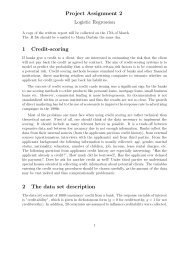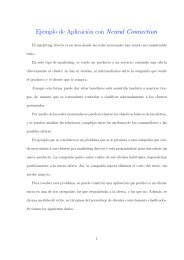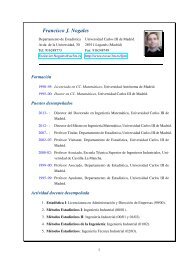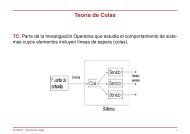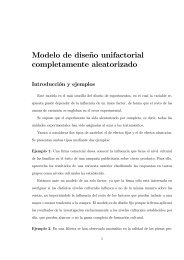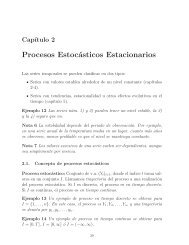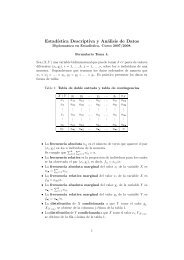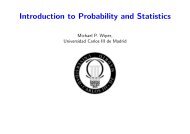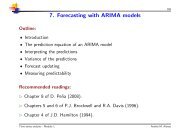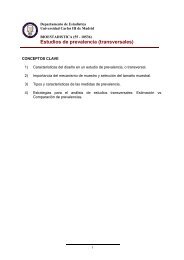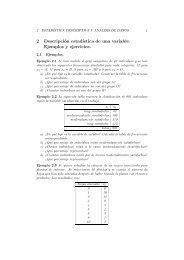Slides Chapter 1. Measure Theory and Probability
Slides Chapter 1. Measure Theory and Probability
Slides Chapter 1. Measure Theory and Probability
You also want an ePaper? Increase the reach of your titles
YUMPU automatically turns print PDFs into web optimized ePapers that Google loves.
<strong>1.</strong>9. THE CHARACTERISTIC FUNCTION<br />
Corolary <strong>1.</strong>7 (Properties of a symmetric r.v.)<br />
Let X be a symmetric r.v. Then,<br />
(a) If F X is absolutely continuous, then f X (x) = f X (−x), ∀x ∈<br />
IR.<br />
(b) If F X is discrete, then P X (x) = P X (−x), ∀x ∈ IR.<br />
Theorem <strong>1.</strong>24 (c.f. of a symmetric r.v.)<br />
The c.f. ϕ of the d.f. F is real iff F is symmetric.<br />
Remark <strong>1.</strong>16 We know that ϕ(t), ∀t ∈ IR determines completely<br />
F(x), ∀x ∈ IR. However, if we only know ϕ(t) for t in<br />
a finite interval, then do we know completely F(x), ∀x ∈ IR? The<br />
answer is no, since we can find two different d.f.s with the same c.f.<br />
in a finite interval, see Example <strong>1.</strong>24.<br />
Example <strong>1.</strong>24 (The c.f. in a finite interval does not<br />
determine the d.f.)<br />
Consider the r.v. X taking the values ∓(2n+1), n = 0,1,2,···,<br />
with probabilities<br />
P(X = 2n+1) = P(X = −(2n+1)) =<br />
4<br />
π 2 (2n+1) 2, n = 0,1,2,···<br />
Consideralsother.v. Y takingvalues0,∓(4n+2),n = 0,1,2,...,<br />
with probabilities<br />
P(Y = 0) = 1/2<br />
P(Y = 4n+2) = P(X = −(4n+2)) =<br />
2<br />
π 2 (2n+1) 2, n = 0,1,2,···<br />
ISABEL MOLINA 51



